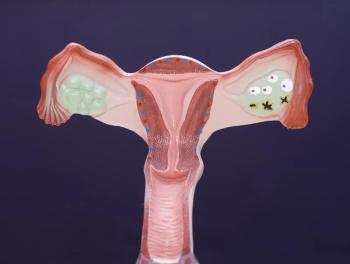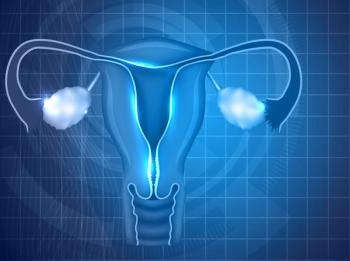
No Survival Benefit With Adjuvant Chemo for Most Endometrioid, Ovarian Clear Cell Cancers
A large database study found that most patients with stage I endometrioid epithelial ovarian cancer or ovarian clear cell cancer do not have better survival outcomes when treated with adjuvant chemotherapy.
A large database study found that most patients with stage I endometrioid epithelial ovarian cancer (EEOC) or ovarian clear cell cancer (OCCC) do not have better survival outcomes when treated with adjuvant chemotherapy, compared to those not treated. Only patients with substage IC, grade 3 EEOC saw a benefit with adjuvant chemotherapy.
“Despite a lack of convincing data, the National Comprehensive Cancer Network recommends chemotherapy for all patients with early-stage OCCC,” wrote study authors led by Oliver Zivanovic, MD, PhD, of Memorial Sloan Kettering Cancer Center in New York. For EEOC, patients with substages IA or IB, grade 1 disease are recommended to undergo observation, and adjuvant chemotherapy is optional for those with substage IA or IB, grade 2 or 3 disease; it is recommended for substage IC disease of any grade.
The new study evaluated the impact of adjuvant chemotherapy in this patient population based on the Surveillance, Epidemiology, and End Results database. It included 3,552 patients with stage I EEOC, and 1,995 patients with stage I OCCC. The results were
Of the OCCC patients, 1,374 received adjuvant chemotherapy (69%). The 5-year overall survival (OS) rate among those patients was 85%, compared with 83% in those who did not receive adjuvant chemotherapy (P = .439). For the EEOC patients, 1,600 received adjuvant chemotherapy (45%), and the 5-year OS rate was 90% with and 89% without that treatment (P = .807).
The patients who underwent chemotherapy for EEOC were younger (P < .001) and had higher grade (P < .001) and higher stage tumors (P < .001) than those who did not receive chemotherapy. A more recent year of diagnosis and younger age were also significantly associated with adjuvant chemotherapy use.
For OCCC patients, patients receiving chemotherapy were again younger (P = .005) and had a higher substage of disease (P < .001). More recent year of diagnosis was again significantly associated with chemotherapy.
The only subgroup of patients that saw a significant benefit with adjuvant chemotherapy was those with substage IC, grade 3 EEOC. In those patients, the 5-year OS rate was 81% with chemotherapy and 62% without it, for a hazard ratio for mortality of 0.583 (95% CI, 0.359–0.949; P = .030).
The authors noted that the study’s retrospective nature and a lack of randomization does limit interpretation of the results, but the large number of patients allowed for meaningful analyses. “Clinical trials targeting patients with rare histologic subtypes of epithelial ovarian cancer, such as EEOC and OCCC, are warranted,” they concluded. “Such trials can focus on the discovery of new biomarkers to predict individual response to standard chemotherapy and to determine actionable mutations for novel targeted agents.”
Newsletter
Stay up to date on recent advances in the multidisciplinary approach to cancer.





















































































